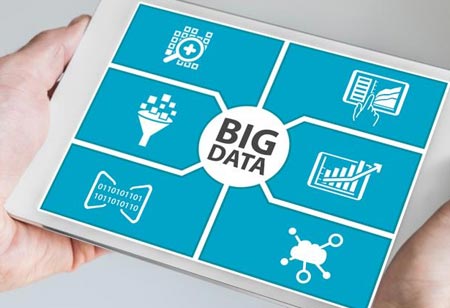THANK YOU FOR SUBSCRIBING
Key Advantages of Big Data Analytics in Hiring
Big data analytics promises improved outreach to potential applicants, higher hiring efficiency, fewer people hours spent sifting through resumes and the selection of more qualified and bettermatched candidates

By
Apac CIOOutlook | Wednesday, September 15, 2021
Stay ahead of the industry with exclusive feature stories on the top companies, expert insights and the latest news delivered straight to your inbox. Subscribe today.
Big data analytics promises improved outreach to potential applicants, higher hiring efficiency, fewer people hours spent sifting through resumes and the selection of more qualified and better-matched candidates.
FREMONT, CA: While there are numerous benefits of big data analytics, organizations must be prepared to manage the associated risks, especially when hiring. While the term has various meanings depending on the context, big data often refers to data that is so large in volume that it requires computers to interpret rather than traditional analysis techniques. Big data analytics, which incorporates data volume, collecting speed, type acquired, and how best to decode it, is often used interchangeably for the actual data and its automated analysis. Marketing teams have long used big data analytics to precisely target potential clients. HR departments are increasingly thinking about whether and how to use big data tools in their hiring processes.
Big data analytics promises improved outreach to potential applicants, higher hiring efficiency, fewer people hours spent sifting through resumes and the selection of more qualified and better-matched candidates. For these purposes, the market includes a variety of analytical tools, such as algorithms that scan resumes to match candidates to jobs by simulating human hiring tendencies, assess candidates' cognitive abilities against those of high-performing incumbents, and measure candidates on personality traits deemed critical for job success. Vendors pitch their big data solutions as predictive algorithms that will help their clients hire the appropriate individuals by mapping an applicant's profile to the company's open positions. As a result, companies will boost productivity, increase retention, and spend fewer resources on staff selection if they hire the right individuals.
To help choose attributes and individuals for recruiting, several big data solutions leverage artificial intelligence (AI) or machine learning. Machine learning builds on the baseline algorithms that make selection decisions by learning from mistakes. For instance, a job role may evolve organically to the point where an old job description may not adequately assess the skills required of a candidate. Still, an AI algorithm trained to mine the current employees' data may uncover character traits that help define the skills needed to succeed in the role. As a machine learns, it can take these character traits of current employees into account, thereby improving hiring judgments as the selection algorithm changes.





